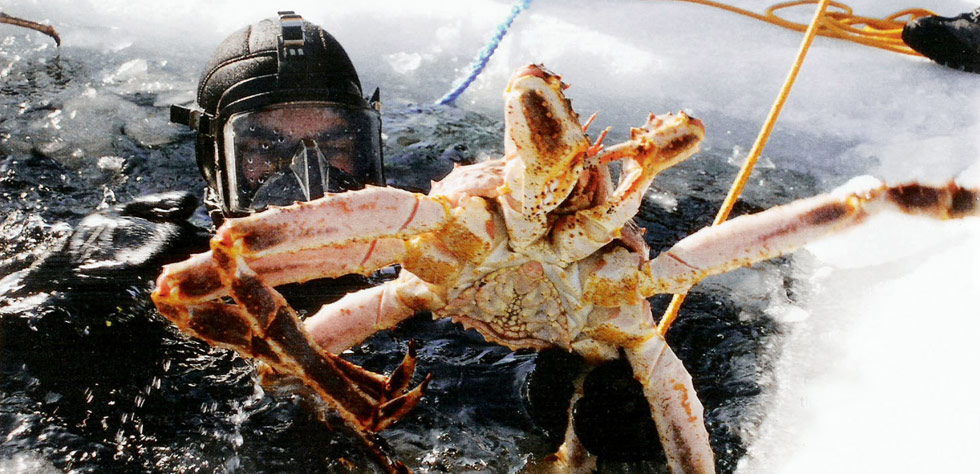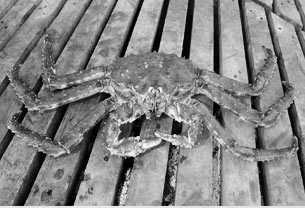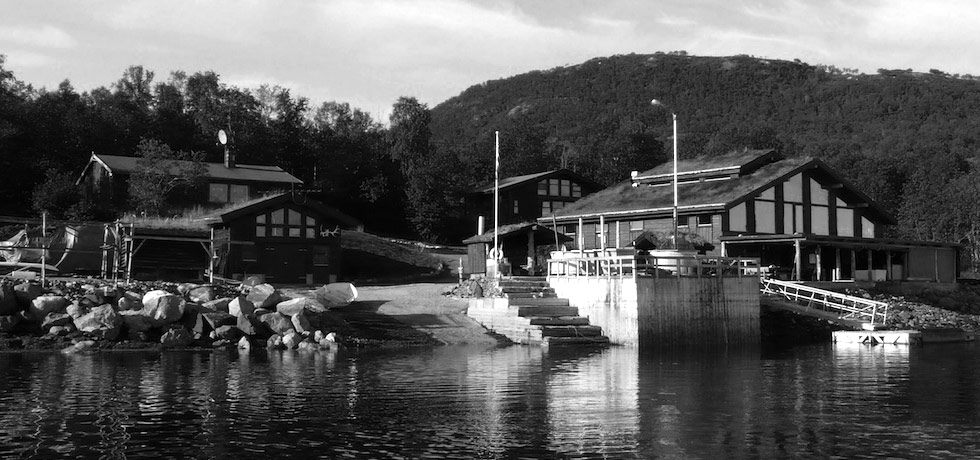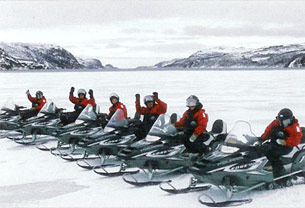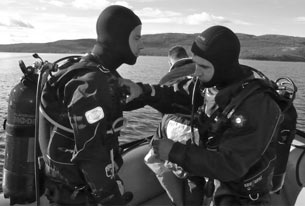On the most northerly point of Scandinavia, high up in the Arctic Circle, a Russian invading army is on the march. Western Europe is under threat. But this is no conventional force. It is an alien species of giant red king crabs.
These monsters of the deep, which can grow to 15kg and have an arm span of up to 2m, were introduced to the area 40 years ago. But with almost no natural predators, they have multiplied at an alarming rate and now pose a threat to the marine environment. Culling the population is a matter of priority. Is there anyone bold enough to volunteer for the job?
With a weekend to spare, a friend and I offer to do our bit. Armed with just a diver’s suit, we’ll plunge to the floor of the Arctic sea, scoop up a couple of crabs and have them cooked for our supper, washed down with a fine sauvignon blanc. That’s provided my fingers, or any other body parts, don’t get caught between the crab’s pincers. Apparently they have the strength of a hydraulic crusher.
![]()
Dan and I catch the last Oslo flight out of Heathrow but it arrives too late for our connecting flight so we bed down in the functional Radisson SAS airport hotel. Here we have the first scary encounter – the price of Norwegian beer.
![]()
We arrive at Kirkenes in an area called Finnmark where the borders of Norway, Russia and Finland meet. It’s at a latitude 70ºN, which is about 385km north of the Arctic Circle. It’s minus 15ºC outside, bone-chillingly cold and only just getting light. We are met by 37-year-old Lars-Petter Øie. Eight years ago he came up with the idea of running king crab safaris. Like most local businesses, he applied to the government for a grant but they refused. “They thought I was crazy,” he says. As we head north in Øie’s 4x4 through the snowy and pristine Arctic environment, I wonder if maybe we they were right. Who would want to go diving up here? And with giant crabs?
We turn off the road just before the border post to Russia and drive along a track alongside the shore of Jardfjord. After a few miles we come to Øie’s HQ, the Arctic Adventure Resort, a log cabin-cum-eco-lodge. A keen carpenter, he built it himself. On the porch lies a massive aeroplane propeller and a couple of heavy-duty machine guns salvaged from the fjord. Kirkenes had great strategic importance during the second world war and it was heavily bombed. As a result, there are shipwreaks and downed aircraft buried under the fjord ice.






